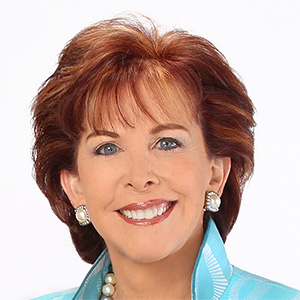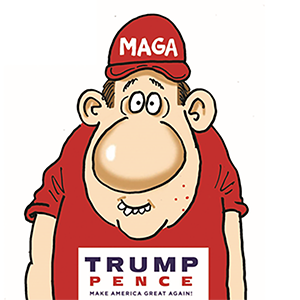Tariff tit-for-tat has Seattle waiting for the ships to come in
Published in Business News
SEATTLE — Like many of his neighbors near the Seattle waterfront, Alex Smith keeps a close eye on the big container ships crossing Elliott Bay to and from the terminals at the port of Seattle.
So when Smith, a retired marine components industry professional, noticed fewer vessels coming through starting in mid-April, he worried it was an "early warning system" for the effects of the widening U.S.-China trade dispute.
"It's frightening, to tell you the truth," said Smith, 80, of the possible economic costs as the two countries' escalating tariffs have made trade much more expensive.
Fewer ships coming into the U.S. means companies can't get components. Retailers and consumers can't get products. Farmers and manufacturers lose foreign markets. "Everything stops," said Smith.
Smith is hardly alone in worrying about the economy in and around trade-reliant Puget Sound ever since new tariffs rolled out by President Donald Trump quickly escalated into a full blown trade war.
Experts think it won't be until May that the full impacts of a U.S.-China tariff tit-for-tat hit the ports of Seattle and Tacoma, given the weekslong transit times between the sparring nations.
But port officials and port-dependent businesses are already feeling the early effects.
They're also bracing for what could be a substantial decline not only in import and export activity, but also in work for related players. That includes longshoremen who handle the cargo and truckers who haul goods into and out of the ports.
"One of my fears is that the local trucking community is going to be the first to be impacted by these changes" in cargo volumes, said Jeff Bellerud, chief operating officer at the Northwest Seaport Alliance, which oversees marine cargo operations at both ports.
For months now, fears of a slowdown have been masked by a surge in so-called forward buying.
Starting last summer, many U.S. companies began importing extra inventory or shipping extra products overseas out of concern that then-candidate Trump would win reelection and make good on his campaign promises of high tariffs.
That forward buying continued in the first three months of this year. In January, February and March, the ports of Tacoma and Seattle handled nearly 666,000 inbound and outbound containers, a 24% jump from the same period in 2024, port data shows.
While it's unclear how much of that extra volume was tied to forward buying, "a significant portion of that is likely due to folks advancing orders with concerns about potential tariffs," said Steve Balaski, director of business development at the Northwest Seaport Alliance.
Now, however, the period of forward buying appears to be giving way to a period of slow or even no buying, especially since Trump raised tariffs on some Chinese goods to 145% earlier this month, even as he has cut tariffs on many other countries.
Tariffs are essentially a tax on imported goods that are paid by importers, which must often pass long some or all of that cost to consumers.
Port officials said they were still analyzing vessel data and couldn't yet say whether April had seen a marked decrease in vessel traffic. Others say they're seeing a decline.
Between April 1 and April 15, the number of container vessels moving to or from the ports of Seattle and Tacoma was down around 27% compared to the first half of March and by around 24% from April 1-15 of 2024, according to a Seattle-area marine services industry insider, who asked to remain anonymous because they weren't authorized to speak for the company.
And Smith, the amateur ship-spotter, says the drop is pretty clear to anyone actually looking at Elliott Bay.
"Give me a break," he said, laughing. "There's no container ships. ... What more do you need?"
Whatever the decline turns out to be, it isn't necessarily all tariff-related.
Other factors that could reduce container traffic in Puget Sound include congestion-related delays at the port of Vancouver, B.C., where many vessels stop before or after coming to Seattle and Tacoma, port officials says.
Longer term, the rise of larger container vessels is also lowering the number of sailings, as is the industry's "alliance" strategy, where rivals share vessels to avoid half-full ships.
But April's apparent lull on Puget Sound could foreshadow even steeper falls in traffic as the trade war continues.
Already, many scheduled sailings by container vessels bound from other nations to U.S. ports, including Seattle and Tacoma, have been canceled or postponed. Often, U.S. importers are deciding they can't afford to pay the tariffs, which effectively amount to a tax on top of the price of the imported goods.
Media accounts have reported a 30% decline in scheduled sailings out of China for the U.S., which the alliance's Balaski says is "a fair estimate for what we're going to see" in terms of impacts on alliance operations, which count on China for around 40% of imported volume.
Because cargo vessels take several weeks to reach Seattle from Asia, the major effects of that missing cargo won't materialize until mid-May, when the port expects volume to go "soft."
But some early ripples have already arrived.
SwaddleDesigns, a Seattle-based baby clothes company that relies heavily on imports from China, paused a container shipment due this month after realizing the 145% tariff would add roughly $300,000 to the shipment's original $200,000 cost, said Jeff Damir, chief operating officer.
"As a small business, we just don't have that money sitting around," Damir said.
Exporters are also feeling the chill of tariffs.
Seattle-Tacoma is one of the largest gateways for exports of hay and the largest for apples and frozen French fries. All are vulnerable to China's retaliatory tariffs, which have made Chinese buyers less interested in U.S. goods.
"We've had exporters actually coming to our terminals to pick up containers of product that they'd already delivered to be exported to China and they're not going to ship them" due to the Chinese tariffs, Balaski said. "They're just picking them up and taking them back and trying to find another home for them."
Adding to the pain is the uncertainty over how long the tariffs could last.
Trump has a pattern of suspending or lowering tariffs, and media reports indicated he is also considering lowering tariffs on China.
Smith, for one, isn't holding his breath. After years in manufacturing, he knows how global supply chains work and how hard they are to restart.
Even if the White House rolled back the tariffs tomorrow, it would take weeks or months before flow of goods returns to normal, he said.
"This pipeline has been shut off and it's not like you can turn it back on and it starts up again in a day," Smith said. "The pipeline is empty."
©2025 The Seattle Times. Visit seattletimes.com. Distributed by Tribune Content Agency, LLC.















Comments